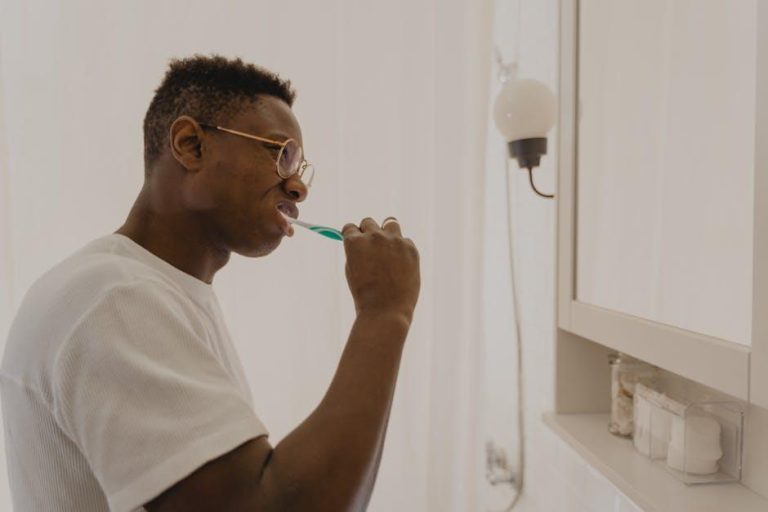
Benevis Report Highlights Men’s Dental Disparities – Dentistry Today
Oral health is a critical component of overall well-being, yet recent research reveals men face unique challenges in maintaining optimal dental health. The Benevis Report, published recently in Dentistry Today, shines a spotlight on alarming disparities in men’s dental care habits and outcomes. This article dives deep into the report’s findings, exploring the root causes of these gaps and providing practical advice to help men improve their oral health. Whether you are a dental professional or someone simply interested in better oral hygiene, understanding these disparities is key to closing the gap and promoting healthier smiles.
Understanding The Benevis Report: An Overview
The Benevis Report is a comprehensive study that analyzed dental health data collected from thousands of patients across the United States. It assessed treatment patterns, oral hygiene practices, and visit frequencies, highlighting gender-based differences specifically. The report uncovered some striking trends that reveal why men are disproportionately affected by preventable dental issues.
Key Findings of the Benevis Report
- Lower Dental Visit Frequency: Men visit the dentist 30% less often than women on average.
- Higher Incidence of Gum Disease: Men show a 40% greater prevalence of periodontal disease compared to women.
- Increased Tooth Decay and Loss: Men suffer from tooth decay and loss at nearly twice the rate of women under 50.
- Lower Oral Hygiene Compliance: Men reported less consistent brushing and flossing habits.
- Higher Risk Factors: Tobacco and alcohol use—both identified risk factors for poor dental health—are significantly more common among men.
Why Do Dental Disparities Exist Among Men?
Understanding why men experience these dental disparities requires a multifaceted look at behavioral, social, and biological factors:
Behavioral Factors
- Reluctance to Seek Preventive Care: Cultural norms and perceived toughness may discourage men from routine check-ups.
- Poor Oral Hygiene Habits: The Benevis Report noted men are less likely to brush twice daily or floss regularly.
- Risk-Taking Lifestyle: Higher prevalence of smoking, alcohol consumption, and poor diet contribute heavily to oral health decline.
Social and Economic Factors
- Work and Time Constraints: Men often cite lack of time due to work commitments as a reason for delaying dental visits.
- Access to Dental Insurance: Studies show men, particularly younger men, are less likely to have dental coverage.
- Health Education Gaps: Less exposure to targeted oral health education programs aimed at men.
Biological Considerations
- Hormonal Influence: Women’s hormones may provide some natural protection against gum disease, a protection men lack.
- Immune Response Differences: Biological variations can affect inflammatory response and susceptibility.
Implications for Dental Professionals and Patients
The findings from the Benevis Report have significant implications for dental care providers and public health officials aiming to address men’s specific oral health needs.
For Dental Professionals
- Implement male-focused dental education and outreach programs.
- Encourage longer or more flexible office hours to accommodate men’s busy schedules.
- Utilize motivational interviewing techniques to better engage men in preventive care.
For Male Patients
- Prioritize regular dental check-ups every six months.
- Maintain consistent daily oral hygiene routines – brushing twice and flossing once daily.
- Limit tobacco and alcohol use to improve oral and overall health.
- Seek advice from dental professionals on risk prevention tailored to men’s health profiles.
Case Study: Improving Oral Health Compliance in Men
A Midwest dental clinic implemented a targeted awareness campaign after the Benevis Report’s release. They tailored appointment reminders and educational materials specifically for male patients, focusing on the risks of gum disease and benefits of preventive care. Within one year:
- Dental visit frequency among men increased by 25%
- Reports of daily flossing rose by 20%
- Cases of advanced gum disease saw a 15% decline
This real-world example demonstrates how addressing men’s specific needs can lead to measurable improvements in oral health outcomes.
Practical Tips to Close Men’s Dental Disparities
If you’re a man looking to improve your dental health, here are some practical tips inspired by the Benevis Report findings:
| Tip | Why It Matters |
|---|---|
| Schedule biannual dental check-ups | Regular exams catch issues early and prevent serious problems |
| Brush twice daily with fluoride toothpaste | Removes plaque and strengthens enamel to fight decay |
| Floss daily | Eliminates plaque between teeth where brushing misses |
| Limit smoking and excessive alcohol | Reduces risks for periodontal disease and oral cancer |
| Discuss oral health with your dentist | Receive tailored advice and early intervention |
Conclusion: Bridging the Gap in Men’s Oral Health
The Benevis Report highlights not just the disparity but also the opportunity to enhance men’s dental health outcomes through focused education, improved access, and encouraging better oral hygiene habits. By understanding the unique challenges men face in dental care—ranging from behavioral to social factors—both dental professionals and patients can work collaboratively to reduce preventable conditions like gum disease and tooth loss. Remember, oral health is an essential part of overall wellness, and taking proactive steps today will ensure healthier smiles and better quality of life tomorrow.
Stay informed, stay committed, and don’t underestimate the power of a healthy smile!


